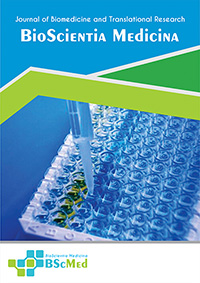Main Article Content
Abstract
Background: Spaceflight associated neuro-ocular syndrome (SANS) is a critical health risk for astronauts on long-duration missions, characterized by potentially vision-altering ocular changes. Lower body negative pressure (LBNP) is a primary countermeasure designed to reverse the foundational cephalad fluid shifts. This study provides the first rigorous, quantitative synthesis of LBNP's efficacy on key SANS-related ocular parameters.
Methods: Following PRISMA guidelines, a systematic search of PubMed, ScienceDirect, and the Cochrane Library (2015–2025) was conducted. Studies quantifying the effect of LBNP on intraocular pressure (IOP), optic nerve sheath diameter (ONSD), or choroidal thickness (CT) in microgravity or its ground-based analogs were included. A random-effects meta-analysis calculated the pooled mean difference (MD). Leave-one-out sensitivity analysis and assessment of publication bias were performed to ensure robustness.
Results: Seven studies (N=89 subjects) met the criteria. The meta-analysis demonstrated that LBNP application resulted in statistically significant reductions in IOP (MD = -2.15 mmHg; 95% CI [-3.01, -1.29]; p < 0.001), ONSD (MD = -0.31 mm; 95% CI [-0.45, -0.17]; p < 0.001), and subfoveal Choroidal Thickness (MD = -18.50 µm; 95% CI [-25.65, -11.35]; p < 0.001). Subgroup analysis revealed a more pronounced effect in ground-based studies. The results were robust in sensitivity analyses, and funnel plots suggested a low risk of publication bias.
Conclusion: This meta-analysis provides robust, quantitative evidence supporting LBNP's efficacy in acutely mitigating the cardinal structural signs of SANS. By directly counteracting the underlying pathophysiology, LBNP is affirmed as a cornerstone countermeasure technology essential for preserving astronaut ocular health during the upcoming era of deep space exploration.
Keywords
Article Details
As our aim is to disseminate original research article, hence the publishing right is a necessary one. The publishing right is needed in order to reach the agreement between the author and publisher. As the journal is fully open access, the authors will sign an exclusive license agreement.
The authors have the right to:
- Share their article in the same ways permitted to third parties under the relevant user license.
- Retain copyright, patent, trademark and other intellectual property rights including research data.
- Proper attribution and credit for the published work.
For the open access article, the publisher is granted to the following right.
- The non-exclusive right to publish the article and grant right to others.
- For the published article, the publisher applied for the Creative Commons Attribution-NonCommercial-ShareAlike 4.0 International License.





